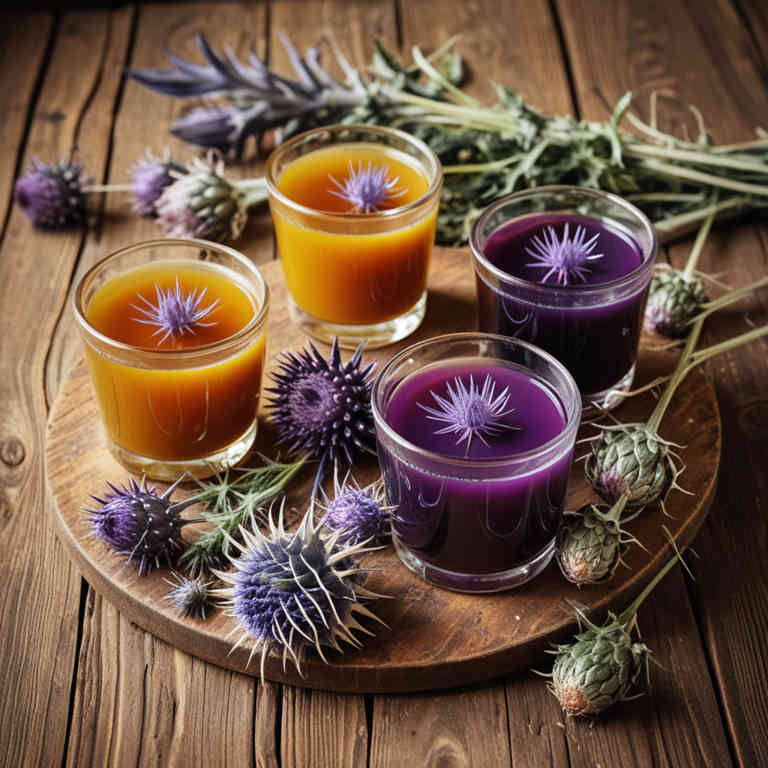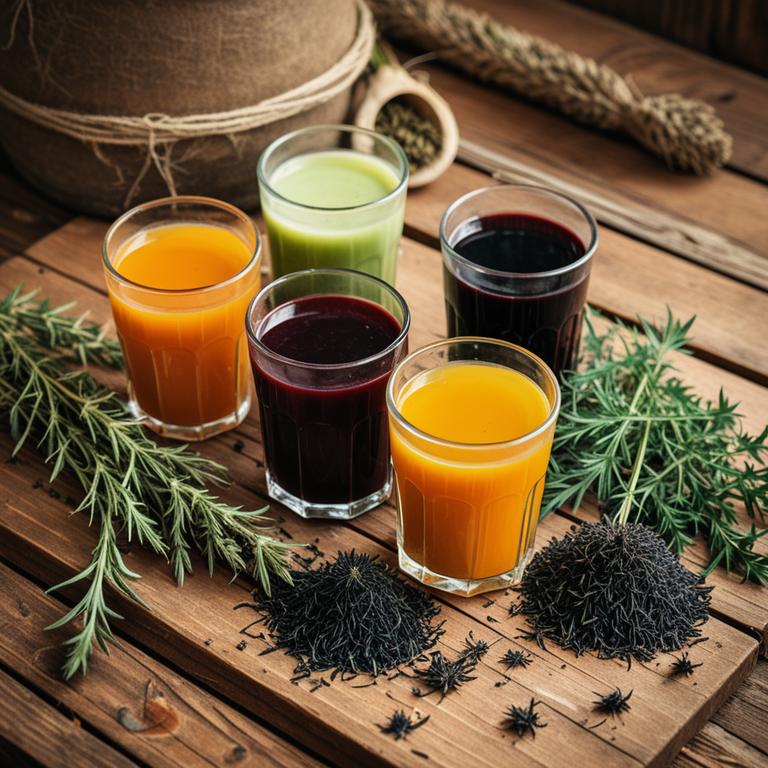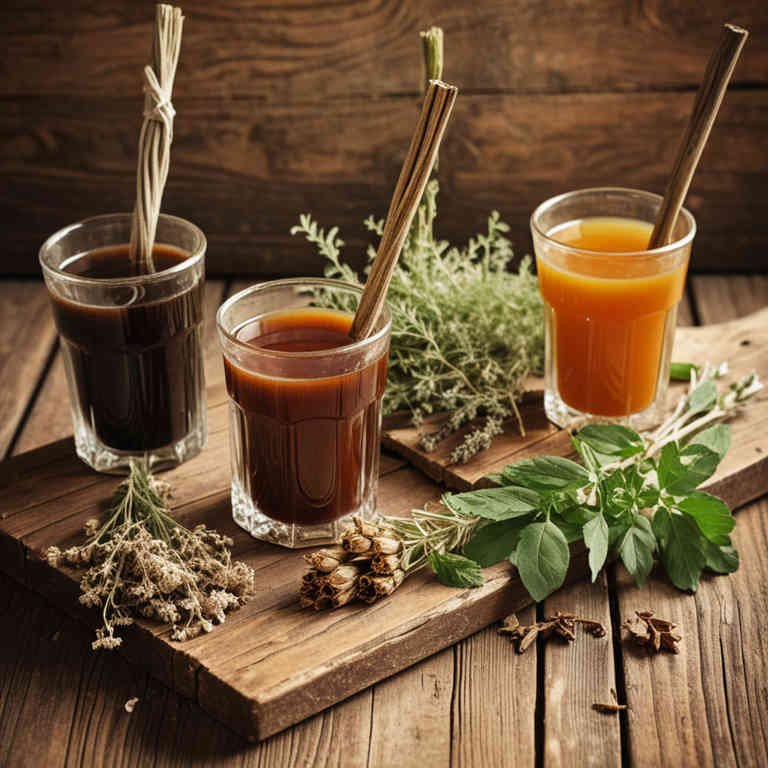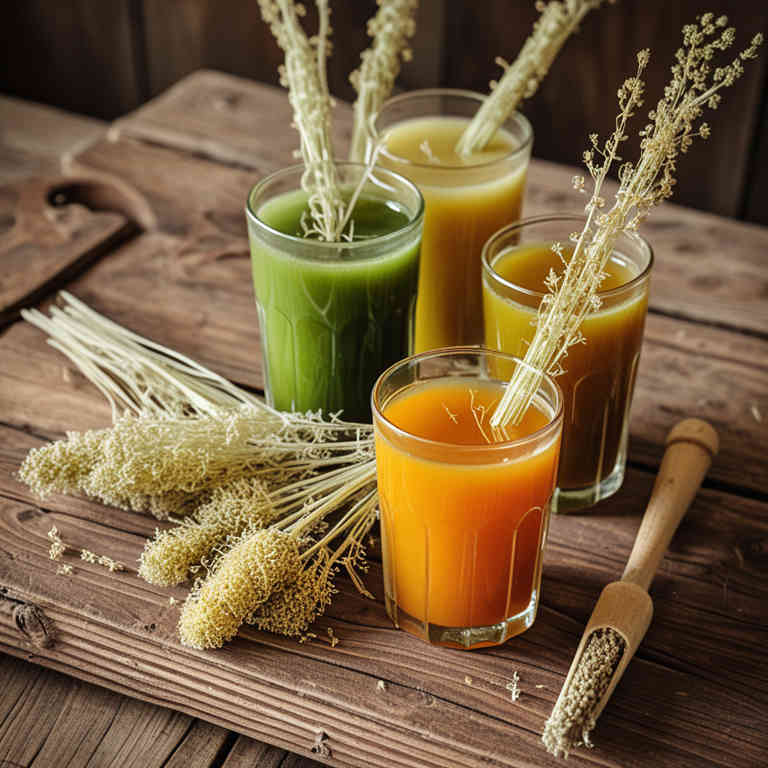10 Best Herbal Juices For Ovulation Pain

Herbal juices can be a natural complement to managing ovulation pain, often referred to as mittelschmerz, by supporting hormonal balance and reducing inflammation.
Common herbs used in these juices include ginger, turmeric, and chamomile, which are known for their anti-inflammatory and pain-relieving properties. Drinking a blend of these herbs can help ease cramping and discomfort associated with ovulation. It is important to consult with a healthcare provider before incorporating herbal juices into your regimen, especially if you have underlying health conditions or are taking medications.
While herbal juices may provide some relief, they should not replace professional medical advice or treatment for severe or persistent pain.
FREE Herb Drying Checklist
How to make sure every batch retains maximum flavor, color, and aroma without the risk of mold or over-drying. Eliminate guesswork and trial-and-error, making herb drying faster, easier, and more efficient every time.
Table of Contents
1. Curcuma longa

Curcuma longa, commonly known as turmeric, has been traditionally used for its anti-inflammatory and analgesic properties, which may offer relief from ovulation pain.
The active compound in turmeric, curcumin, helps reduce inflammation and oxidative stress, both of which can contribute to discomfort during ovulation. Herbal juices made from turmeric, often combined with other anti-inflammatory herbs like ginger or cinnamon, can be consumed to support hormonal balance and ease menstrual discomfort. However, it is important to consult with a healthcare provider before incorporating turmeric into one's regimen, especially for those with existing health conditions or taking medications.
While turmeric may provide some natural relief, it should not replace professional medical advice or treatment for severe or persistent ovulation pain.
2. Vitex agnus-castus

Vitex agnus-castus, commonly known as chaste tree berry, has been traditionally used to support hormonal balance and is often incorporated into herbal juices aimed at aiding ovulation.
These herbal juices typically blend Vitex with other fertility-supporting herbs like fenugreek, ginger, and nettle to enhance their effectiveness. Proponents suggest that Vitex may help regulate the menstrual cycle and reduce symptoms associated with ovulation pain by influencing luteinizing hormone (LH) levels. However, it is important to note that while some studies show potential benefits, more research is needed to confirm its efficacy for ovulation pain.
As with any herbal remedy, it is advisable to consult a healthcare provider before use, especially for those with existing medical conditions or on medication.
3. Silybum marianum

Silybum marianum, commonly known as milk thistle, is a herbal remedy often used for its potential liver-protective properties.
While it is not specifically marketed for ovulation pain, some individuals use milk thistle juice to support hormonal balance and overall reproductive health. The seeds of the plant contain compounds like silymarin, which may have anti-inflammatory and antioxidant effects that could potentially alleviate discomfort associated with ovulation. However, there is limited scientific evidence directly linking milk thistle juice to the reduction of ovulation pain.
It is important to consult with a healthcare provider before using any herbal supplements, especially during fertility treatments or if experiencing persistent pain.
4. Urtica dioica

Urtica dioica, commonly known as stinging nettle, has been traditionally used in herbal medicine for its potential health benefits, including supporting reproductive health.
Some proponents suggest that stinging nettle juice may help alleviate symptoms associated with ovulation pain due to its high concentration of minerals and anti-inflammatory properties. However, it is important to note that there is limited scientific evidence directly linking urtica dioica juice to the reduction of ovulation pain. While some women may find relief through its natural compounds, it is advisable to consult a healthcare provider before using it as a treatment for menstrual or ovulation-related discomfort.
As with any herbal remedy, individual responses can vary, and it should be used cautiously alongside other medical treatments.
5. Cimicifuga racemosa

Cimicifuga racemosa, commonly known as black cohosh, has been traditionally used to alleviate symptoms associated with menopause and menstrual discomfort, including ovulation pain.
Some studies suggest that its compounds may help regulate hormonal imbalances, which can contribute to pain during ovulation. Herbal juices made from Cimicifuga racemosa are often prepared by combining the root with other herbs and sweeteners to enhance flavor and absorption. However, it is important to consult a healthcare provider before using these juices, as they may interact with medications or have side effects in certain individuals.
While anecdotal evidence supports its use for menstrual pain relief, more rigorous scientific research is needed to fully understand its efficacy and safety.
6. Zingiber officinale

Zingiber officinale, commonly known as ginger, has been traditionally used to alleviate symptoms associated with ovulation pain due to its anti-inflammatory and analgesic properties.
Ginger juice, derived from fresh ginger root, contains bioactive compounds like gingerol and shogaol that help reduce uterine cramping and discomfort during the menstrual cycle. It is believed to improve blood circulation and ease the tension in the pelvic region, which can contribute to less severe ovulation pain. However, it is important to consult a healthcare provider before using ginger juice, especially for individuals with gastrointestinal issues or those on blood-thinning medications.
Despite its natural benefits, ginger should be consumed in moderation to avoid potential side effects such as heartburn or digestive upset.
7. Rosa canina

Rosa canina, also known as dog rose, is a traditional herbal remedy that has been used for centuries to support women's health, particularly in relation to reproductive wellness.
Its herbal juices, derived from the fruit and flowers of the Rosa canina plant, are believed to have anti-inflammatory and antioxidant properties that may help alleviate symptoms associated with ovulation pain. Some studies suggest that the compounds in Rosa canina can support hormonal balance and reduce uterine inflammation, which may contribute to easing discomfort during ovulation. When consumed as a juice, Rosa canina is often combined with other herbs like ginger or turmeric to enhance its therapeutic effects.
However, it is important to consult with a healthcare provider before using Rosa canina, especially for those with existing health conditions or who are pregnant.
8. Nigella sativa

Nigella sativa, commonly known as black cumin, has been traditionally used in herbal medicine for its potential health benefits, including its anti-inflammatory and pain-relieving properties.
Some individuals use nigella sativa herbal juices to alleviate ovulation pain, also known as mittelschmerz, due to its ability to reduce inflammation and ease menstrual discomfort. While there is limited scientific research on its specific effects on ovulation pain, anecdotal evidence suggests that it may help ease cramping and bloating associated with the menstrual cycle. The seeds are often consumed as a juice or oil, and some people combine them with other herbs like ginger or turmeric for enhanced effects.
However, it is important to consult a healthcare provider before using nigella sativa, especially if you have underlying health conditions or are taking medications.
9. Glycyrrhiza glabra

Glycyrrhiza glabra, commonly known as licorice root, has been traditionally used in herbal medicine for its anti-inflammatory and soothing properties.
When consumed as a herbal juice, it may help alleviate ovulation pain by reducing inflammation and supporting hormonal balance in the reproductive system. The active compounds in licorice root, such as glycyrrhizin and flavonoids, are believed to have mild analgesic and antispasmodic effects that can ease cramping and discomfort. However, it is important to consult a healthcare provider before using licorice root juice, as excessive consumption can lead to side effects like hypertension or fluid retention.
Overall, licorice root juice may offer some natural relief for ovulation pain when used appropriately under professional guidance.
10. Foeniculum vulgare

Foeniculum vulgare, commonly known as fennel, has been traditionally used in herbal medicine to support women's health, including its potential role in alleviating ovulation pain.
The essential oils and compounds found in fennel, such as anethol and estragol, are believed to have antispasmodic and anti-inflammatory properties that may help reduce the discomfort associated with ovulation. When consumed as a herbal juice, fennel can support hormonal balance and ease the cramping sensations often experienced during the menstrual cycle. To prepare fennel juice, fresh fennel seeds or leaves are typically juiced and consumed in small amounts daily, though it is important to consult with a healthcare provider before use.
While some women report relief from ovulation pain with fennel juice, it should not replace professional medical advice, especially for persistent or severe symptoms.